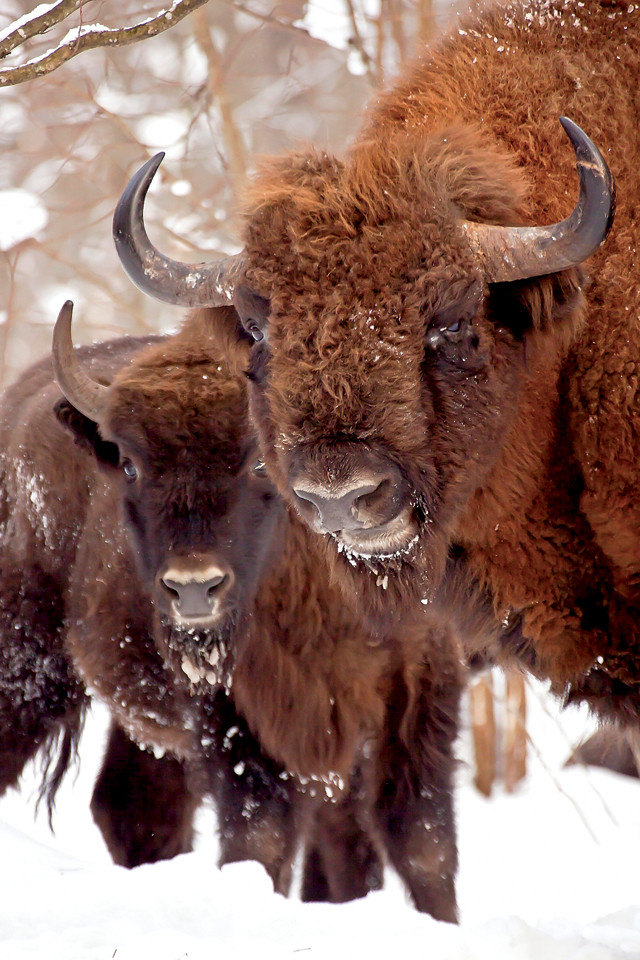
by Mary Caperton Morton Wednesday, January 18, 2017

Depictions of a steppe bison painting (a) found in Lascaux Cave in France compared to a painting found in Pergouset Cave of a previously unknown cattle-bison hybrid species (b). Credit: Soubrier et al., Nature Communications, October 2016.

Modern European bison in Białowieża Forest in Poland. Credit: Rafal Kowalczyk.
Ice-age hunters had an intimate knowledge of the animals they coexisted with — and this familiarity is clearly depicted in paintings on cave walls throughout Europe. Inside a cave in France, scientists recently identified artistic evidence dating to about 17,000 years ago of a previously unknown hybrid species of cattle crossed with bison. The paintings confirm findings from recent genetic studies of fossil bison, the researchers say.
The mystery species, nicknamed the Higgs bison — a cheeky reference to the elusive Higgs boson subatomic particle — is thought to have originated 120,000 years ago, when aurochs, the extinct ancestor of modern cattle, came in contact with steppe bison. In a new study published in Nature Communications, scientists suggest that the hybrid species may be the ancestor of modern European bison, an endangered species that survives in protected pockets of forest in Europe.
In studying DNA from ancient bison bones and teeth collected across Europe, a team led by Julien Soubrier at the University of Adelaide in Australia found a genetic signature in some of the bones that was distinct from modern European bison or any other known species. Radiocarbon dating of the different types of fossils revealed that two types of bison were each more common at times and less common at others. This suggested “that our new species and the steppe bison swapped dominance in Europe several times, in concert with major environmental changes caused by climate change,” for multiple periods lasting several thousand years each, Soubrier said in a statement.
Until now, the steppe bison was thought to have been the sole bison species on the continent during the Late Pleistocene. “French cave researchers told us that there were indeed two distinct forms of bison art in ice-age caves, and it turns out their ages match those of the different species. We’d never have guessed the cave artists had helpfully painted pictures of both species for us,” he said.
The cave paintings, found in the Lascaux, Marsoulas and Pergouset caves in France, show two types of bison, one with long horns and large forequarters, similar in appearance to the American bison, which is a descendant of the steppe bison. The other — a depiction of the hybrid species — has shorter horns and a small hump, and is closer in appearance to modern European bison.
© 2008-2021. All rights reserved. Any copying, redistribution or retransmission of any of the contents of this service without the expressed written permission of the American Geosciences Institute is expressly prohibited. Click here for all copyright requests.